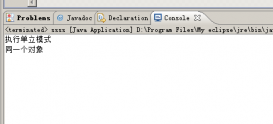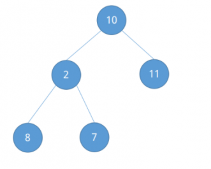一、前言
在消息中间件中有 2 个重要的概念:消息代理和目的地。当消息发送者发送消息后,消息就被消息代理接管,消息代理保证消息传递到指定目的地。
我们常用的消息代理有 JMS 和 AMQP 规范。对应地,它们常见的实现分别是 ActiveMQ 和 RabbitMQ。
二、整合 ActiveMQ
2.1 添加依赖
|
1
2
3
4
5
6
7
8
9
|
<dependency> <groupId>org.springframework.boot</groupId> <artifactId>spring-boot-starter-activemq</artifactId></dependency><!-- 如果需要配置连接池,添加如下依赖 --><dependency> <groupId>org.apache.activemq</groupId> <artifactId>activemq-pool</artifactId> </dependency> |
2.2 添加配置
|
1
2
3
4
5
6
7
8
|
# activemq 配置spring.activemq.broker-url=tcp://192.168.2.12:61616spring.activemq.user=adminspring.activemq.password=adminspring.activemq.pool.enabled=falsespring.activemq.pool.max-connections=50# 使用发布/订阅模式时,下边配置需要设置成 truespring.jms.pub-sub-domain=false |
此处 spring.activemq.pool.enabled=false,表示关闭连接池。
2.3 编码
配置类:
|
1
2
3
4
5
6
7
8
9
10
11
12
13
14
15
16
|
@Configurationpublic class JmsConfirguration { public static final String QUEUE_NAME = "activemq_queue"; public static final String TOPIC_NAME = "activemq_topic"; @Bean public Queue queue() { return new ActiveMQQueue(QUEUE_NAME); } @Bean public Topic topic() { return new ActiveMQTopic(TOPIC_NAME); }} |
负责创建队列和主题。
消息生产者:
|
1
2
3
4
5
6
7
8
9
10
11
12
13
14
15
16
17
18
19
|
@Componentpublic class JmsSender { @Autowired private Queue queue; @Autowired private Topic topic; @Autowired private JmsMessagingTemplate jmsTemplate; public void sendByQueue(String message) { this.jmsTemplate.convertAndSend(queue, message); } public void sendByTopic(String message) { this.jmsTemplate.convertAndSend(topic, message); }} |
消息消费者:
|
1
2
3
4
5
6
7
8
9
10
11
12
13
|
@Componentpublic class JmsReceiver { @JmsListener(destination = JmsConfirguration.QUEUE_NAME) public void receiveByQueue(String message) { System.out.println("接收队列消息:" + message); } @JmsListener(destination = JmsConfirguration.TOPIC_NAME) public void receiveByTopic(String message) { System.out.println("接收主题消息:" + message); }} |
消息消费者使用 @JmsListener 注解监听消息。
2.4 测试
|
1
2
3
4
5
6
7
8
9
10
11
12
13
14
15
16
17
18
19
|
@RunWith(SpringRunner.class)@SpringBootTestpublic class JmsTest { @Autowired private JmsSender sender; @Test public void testSendByQueue() { for (int i = 1; i < 6; i++) { this.sender.sendByQueue("hello activemq queue " + i); } } @Test public void testSendByTopic() { for (int i = 1; i < 6; i++) { this.sender.sendByTopic("hello activemq topic " + i); } }} |
打印结果:
接收队列消息:hello activemq queue 1
接收队列消息:hello activemq queue 2
接收队列消息:hello activemq queue 3
接收队列消息:hello activemq queue 4
接收队列消息:hello activemq queue 5
测试发布/订阅模式时,设置 spring.jms.pub-sub-domain=true
接收主题消息:hello activemq topic 1
接收主题消息:hello activemq topic 2
接收主题消息:hello activemq topic 3
接收主题消息:hello activemq topic 4
接收主题消息:hello activemq topic 5
三、整合 RabbitMQ
3.1 添加依赖
|
1
2
3
4
|
<dependency> <groupId>org.springframework.boot</groupId> <artifactId>spring-boot-starter-amqp</artifactId></dependency> |
3.2 添加配置
|
1
2
3
4
5
|
spring.rabbitmq.host=192.168.2.30spring.rabbitmq.port=5672spring.rabbitmq.username=lightspring.rabbitmq.password=lightspring.rabbitmq.virtual-host=/test |
3.3 编码
配置类:
|
1
2
3
4
5
6
7
8
9
10
11
12
13
14
15
16
17
18
19
20
21
22
23
24
25
26
27
28
29
30
31
32
33
34
35
36
37
38
39
40
41
42
43
44
45
46
47
48
49
50
51
52
53
54
55
56
57
58
59
60
61
62
63
64
65
66
67
68
69
70
71
72
73
74
75
76
77
78
79
80
81
82
83
84
85
86
87
88
89
90
91
92
93
94
95
96
97
98
99
100
101
102
|
@Configurationpublic class AmqpConfirguration { //=============简单、工作队列模式=============== public static final String SIMPLE_QUEUE = "simple_queue"; @Bean public Queue queue() { return new Queue(SIMPLE_QUEUE, true); } //===============发布/订阅模式============ public static final String PS_QUEUE_1 = "ps_queue_1"; public static final String PS_QUEUE_2 = "ps_queue_2"; public static final String FANOUT_EXCHANGE = "fanout_exchange"; @Bean public Queue psQueue1() { return new Queue(PS_QUEUE_1, true); } @Bean public Queue psQueue2() { return new Queue(PS_QUEUE_2, true); } @Bean public FanoutExchange fanoutExchange() { return new FanoutExchange(FANOUT_EXCHANGE); } @Bean public Binding fanoutBinding1() { return BindingBuilder.bind(psQueue1()).to(fanoutExchange()); } @Bean public Binding fanoutBinding2() { return BindingBuilder.bind(psQueue2()).to(fanoutExchange()); } //===============路由模式============ public static final String ROUTING_QUEUE_1 = "routing_queue_1"; public static final String ROUTING_QUEUE_2 = "routing_queue_2"; public static final String DIRECT_EXCHANGE = "direct_exchange"; @Bean public Queue routingQueue1() { return new Queue(ROUTING_QUEUE_1, true); } @Bean public Queue routingQueue2() { return new Queue(ROUTING_QUEUE_2, true); } @Bean public DirectExchange directExchange() { return new DirectExchange(DIRECT_EXCHANGE); } @Bean public Binding directBinding1() { return BindingBuilder.bind(routingQueue1()).to(directExchange()).with("user"); } @Bean public Binding directBinding2() { return BindingBuilder.bind(routingQueue2()).to(directExchange()).with("order"); } //===============主题模式============ public static final String TOPIC_QUEUE_1 = "topic_queue_1"; public static final String TOPIC_QUEUE_2 = "topic_queue_2"; public static final String TOPIC_EXCHANGE = "topic_exchange"; @Bean public Queue topicQueue1() { return new Queue(TOPIC_QUEUE_1, true); } @Bean public Queue topicQueue2() { return new Queue(TOPIC_QUEUE_2, true); } @Bean public TopicExchange topicExchange() { return new TopicExchange(TOPIC_EXCHANGE); } @Bean public Binding topicBinding1() { return BindingBuilder.bind(topicQueue1()).to(topicExchange()).with("user.add"); } @Bean public Binding topicBinding2() { return BindingBuilder.bind(topicQueue2()).to(topicExchange()).with("user.#"); } } |
RabbitMQ 有多种工作模式,因此配置比较多。想了解相关内容的读者可以查看《RabbitMQ 工作模式介绍》或者自行百度相关资料。
消息生产者:
|
1
2
3
4
5
6
7
8
9
10
11
12
13
14
15
16
17
18
19
20
21
22
23
24
25
26
27
28
29
30
31
32
33
34
35
36
37
38
|
@Componentpublic class AmqpSender { @Autowired private AmqpTemplate amqpTemplate; /** * 简单模式发送 * * @param message */ public void simpleSend(String message) { this.amqpTemplate.convertAndSend(AmqpConfirguration.SIMPLE_QUEUE, message); } /** * 发布/订阅模式发送 * * @param message */ public void psSend(String message) { this.amqpTemplate.convertAndSend(AmqpConfirguration.FANOUT_EXCHANGE, "", message); } /** * 路由模式发送 * * @param message */ public void routingSend(String routingKey, String message) { this.amqpTemplate.convertAndSend(AmqpConfirguration.DIRECT_EXCHANGE, routingKey, message); } /** * 主题模式发送 * * @param routingKey * @param message */ public void topicSend(String routingKey, String message) { this.amqpTemplate.convertAndSend(AmqpConfirguration.TOPIC_EXCHANGE, routingKey, message); }} |
消息消费者:
|
1
2
3
4
5
6
7
8
9
10
11
12
13
14
15
16
17
18
19
20
21
22
23
24
25
26
27
28
29
30
31
32
33
34
35
36
37
38
39
40
41
42
43
44
45
46
47
48
49
50
51
52
|
@Componentpublic class AmqpReceiver { /** * 简单模式接收 * * @param message */ @RabbitListener(queues = AmqpConfirguration.SIMPLE_QUEUE) public void simpleReceive(String message) { System.out.println("接收消息:" + message); } /** * 发布/订阅模式接收 * * @param message */ @RabbitListener(queues = AmqpConfirguration.PS_QUEUE_1) public void psReceive1(String message) { System.out.println(AmqpConfirguration.PS_QUEUE_1 + "接收消息:" + message); } @RabbitListener(queues = AmqpConfirguration.PS_QUEUE_2) public void psReceive2(String message) { System.out.println(AmqpConfirguration.PS_QUEUE_2 + "接收消息:" + message); } /** * 路由模式接收 * * @param message */ @RabbitListener(queues = AmqpConfirguration.ROUTING_QUEUE_1) public void routingReceive1(String message) { System.out.println(AmqpConfirguration.ROUTING_QUEUE_1 + "接收消息:" + message); } @RabbitListener(queues = AmqpConfirguration.ROUTING_QUEUE_2) public void routingReceive2(String message) { System.out.println(AmqpConfirguration.ROUTING_QUEUE_2 + "接收消息:" + message); } /** * 主题模式接收 * * @param message */ @RabbitListener(queues = AmqpConfirguration.TOPIC_QUEUE_1) public void topicReceive1(String message) { System.out.println(AmqpConfirguration.TOPIC_QUEUE_1 + "接收消息:" + message); } @RabbitListener(queues = AmqpConfirguration.TOPIC_QUEUE_2) public void topicReceive2(String message) { System.out.println(AmqpConfirguration.TOPIC_QUEUE_2 + "接收消息:" + message); }} |
消息消费者使用 @RabbitListener 注解监听消息。
3.4 测试
|
1
2
3
4
5
6
7
8
9
10
11
12
13
14
15
16
17
18
19
20
21
22
23
24
25
26
27
28
29
30
31
32
|
@RunWith(SpringRunner.class)@SpringBootTestpublic class AmqpTest { @Autowired private AmqpSender sender; @Test public void testSimpleSend() { for (int i = 1; i < 6; i++) { this.sender.simpleSend("test simpleSend " + i); } } @Test public void testPsSend() { for (int i = 1; i < 6; i++) { this.sender.psSend("test psSend " + i); } } @Test public void testRoutingSend() { for (int i = 1; i < 6; i++) { this.sender.routingSend("order", "test routingSend " + i); } } @Test public void testTopicSend() { for (int i = 1; i < 6; i++) { this.sender.topicSend("user.add", "test topicSend " + i); } }} |
测试结果略过。。。
踩坑提醒1:ACCESS_REFUSED – Login was refused using authentication mechanism PLAIN
解决方案:
1) 请确保用户名和密码是否正确,需要注意的是用户名和密码的值是否包含空格或制表符(笔者测试时就是因为密码多了一个制表符导致认证失败)。
2) 如果测试账户使用的是 guest,需要修改 rabbitmq.conf 文件。在该文件中添加 “loopback_users = none” 配置。
踩坑提醒2:Cannot prepare queue for listener. Either the queue doesn't exist or the broker will not allow us to use it
解决方案:
我们可以登陆 RabbitMQ 的管理界面,在 Queue 选项中手动添加对应的队列。
以上就是本文的全部内容,希望对大家的学习有所帮助,也希望大家多多支持服务器之家。
原文链接:https://blog.phpsoho.com/2018/02/08/spring-boot-入门之消息中间件














